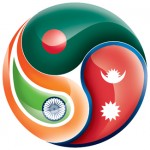NEPAL > Opportunity from India and Bangladesh prompting Nepal to enlarge its power picture.
Backed by new power trade opportunities in SAARC region, Himalayan country Nepal, with its sky high Hydropower potential, is taking ambitious power plans to have high augmentation in its generation capacity as well as cross border evacuation routes.
According to Nepalese Energy Minister Radha Kumari Gyawali, despite 83,000-megawatt hydro-power potential, Nepal suffers from a severe power crisis as it is able to generate barely 800MW. Even it needs to import electricity from India during winter. But, the country is expected to become power surplus by 2016. In due course of time, it will export electricity to India and other countries.
In one side, Bangladesh plans to import 3,500 MW of electricity by 2030 under its power sector master plan. At present, Bangladesh is importing 500MW from India, but its fast growing demand needs fresh and high volume additional supply. After fruitful talks in between, “Now, we are in process of signing a MoU with Nepal on power cooperation by the end of this year,” said a senior official from Bangladesh Power Development Board. Bangladesh has also expressed its interest to invest in hydropower generation in Nepal.
On the other side, fresh Indo-Nepal agreement on power trade has also been cleared up by GoI exposing new opportunities for the Himalayan country.
“Naturally, the opening ups of these opportunities have prompted us to move faster with already set objective of capacity and evacuation rout augmentation plans,” said the Minister.
Nepal has a set plan to establish 2200 MW fresh generation capacity and 3000km transmission lines by 2020. In addition, there are plans for other projects of total 2300MW to be developed by Indian Companies. Survey license for another 8000MW have been issued.
Against total theoretical potential of over 83,000 MW Nepal’s economically feasible potential is 43,000 MW. But, existing capacity is only 757MW that has kept it as a severely power starved country with high deficit.
Source:- The Economic Times





